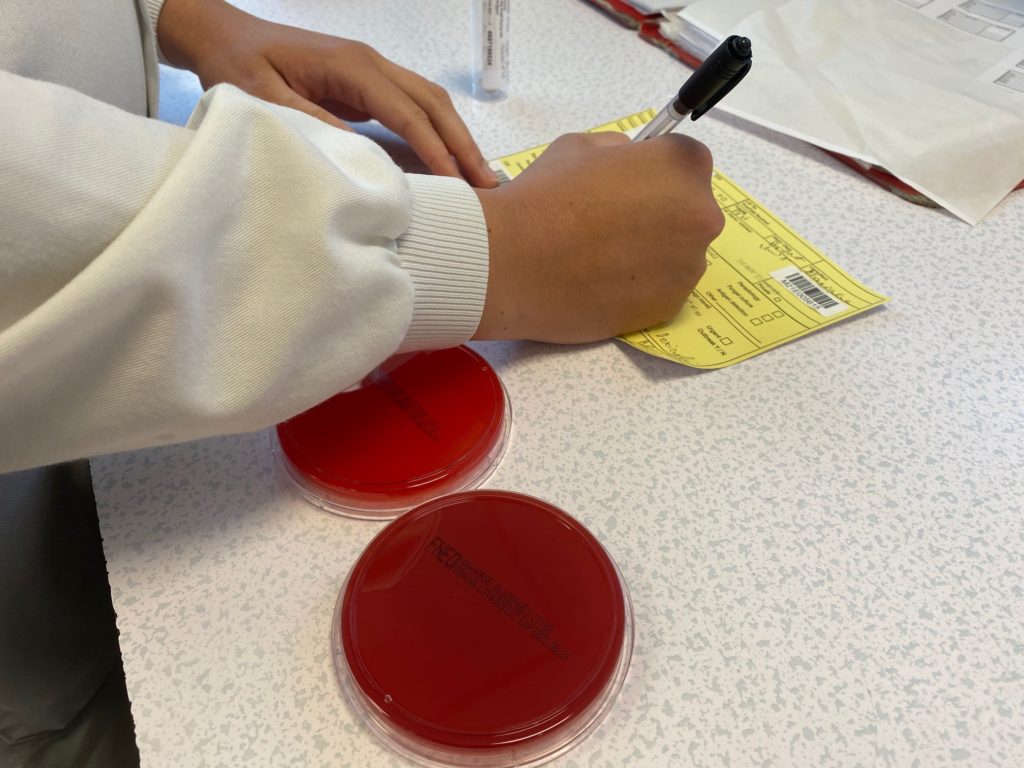Background
In 2013, the Chief Medical Officer for Wales wrote to all health boards, requiring us to undertake a review of deaths associated with Clostridium difficile. While not wishing to belittle the importance of this organism or any other organism to contribute to the deaths of our patients, as a health board with a rural area area, the retrospective review had to look back over 2 years to find the minimum number of associated deaths to review.

Dr Mike Simmons therefore wrote to the CMO to advise his unhappiness over his time and others being inappropriately directed to an issue that was having limited impact in his health board area and exposed his concerns over our E. coli bacteraemia (blood stream infection) rate. The CMO confirmed she was equally concerned about all aspects of Healthcare Associated Infections (HCAI) and as a result, when colleagues from HDUHB met in Cardiff for a “Team Wales” event, we went away persuaded we needed a session with the Board members and Executives to allow us to take a unique approach.
That unique approach was to allow us to take a complexity science approach to the management of healthcare associated infection. A formal paper was endorsed the health boards Quality and Safety Committee in July 2014 with the ultimate goal of reducing our E.coli bacteraemia rate. Prior to that endorsement, a number of meetings took place with different groups to ensure there were no issues with the approach and when discussing at one meeting, one of the Carmarthen GP’s, Dr Carwyn Jones noted that with the emphasis on chronic disease management and proactive engagement with diabetics, he wondered if the dipstick screening for sugars and ketones finding instead white cells and nitrates, might be leading to inappropriate submission of urine samples to the laboratory, with the concomitant finding of organisms and a diagnosis of “Urinary Tract Infection,” even though the patients did not have any symptoms.
Following a series of presentations to clinical staff across the health board where they were asked to think about what steps they could take to reduce healthcare associated infection, Dr Simmons returned to his office with the realisation that while it was fine to challenge others, what was he personally doing to reduce such infections. In September 2014, he resolved that if he was to help reduce the E.coli bacteraemia numbers, he should pay more attention to the management of urine samples arriving in the laboratory because around 50% of E. coli bacteraemia cases were associated with a urinary tract infection. He resolved to increase the use of clinical comments that he would add to urine samples, in an effort to change the management of the results when they were returned to the clinical team requesting the sample. You can find more details of this under the “How” tab on this site.
In the autumn of 2015, with a recognition that there were opportunities to learn from experts on offer in the Bevan Commission, the Hywel Dda team signed up for the first exemplar cohort to further support the work of our Infection Prevention and Control team. As the team watched the E. coli bacteraemia rate in the early months of 2016, it became apparent that the rate of infections with this organism continued to rise. This prompted a review of the previous 15 years of blood culture data across Hywel Dda, which was published in the Journal of Hospital Infection and demonstrated that rather than a failure of our programme, the increase in E. coli bacteraemia was associated with the success of the sepsis programme. The findings are described by Dr Simmons on his first presentation on the Complexity page

However, in the summer of 2016, the lab manager in Glangwili General Hospital made a chance observation that the daily number of urine samples being submitted to the laboratory appeared to have declined significantly. This was an unexpected finding but in retrospect, represents an emergent behaviour in a complex adaptive system. Having demonstrated that E. coli bacteraemia could not reliably be used as a measure of change in the system, attention was redirected to investigation of urine numbers across the three laboratories in Hywel Dda. The results of the investigation were published in the Journal of Infection Prevention in 2019 and an explanation of the thinking that was developing in a BMJ Blog Post. Dr Mike Simmons explains this in his second presentation on the Complexity page of this site.
As the paper discusses, a reduction of 12,000 urine samples per year releases at least £145,000 per annum back to the NHS. This should not be viewed as a saving, rather a reduction in waste and of improvement in the quality of service offered to the population of Wales. The paper speculates on the impact if the innovation was adopted beyond the single health board – the reality is the here and now of the adopt and spread programme.